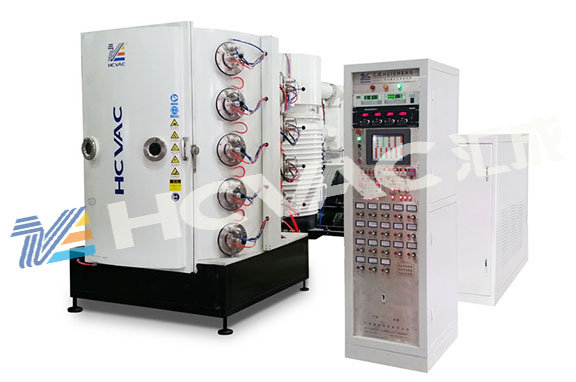The optical coating technology of optical pvd coating machine is developing rapidly, and the market has been put into use in a large number, such as LED, optical oscilloscope, electronic components, digital products, etc., which has been recognized and loved by many manufacturers. However, there are still many people who know little about the coating technology of optical vacuum coating machine, especially the coating principle of optical vacuum coating machine. Today, we will introduce the development stage of the coating principle of optical pvd coating machine:

The first stage is the first generation of optical coating principle. The anti-wear film began in the early 1970s. At that time, it was believed that the glass lens was not easy to grind because of its high hardness, while the organic lens was too soft to wear. Therefore, quartz material is plated on the surface of organic lens in vacuum to form a very hard anti-wear film. However, due to the mismatch between its thermal expansion coefficient and the substrate material, it is easy to detach the film and embrittle the film, so the anti-wear effect is not ideal.
The second stage is the principle of the second generation optical coating. After the 1980s, researchers found theoretically that the mechanism of wear is not only related to hardness, but the film materials have the dual characteristics of "hardness/deformation", that is, some materials have higher hardness but less deformation, while some materials have lower hardness but greater deformation. The second generation of anti-wear film technology is to coat the surface of organic lens with a material with high hardness and not easy to crack by immersion process.
The third stage is the third generation optical pvd coating principle. The anti-wear film technology was developed after the 1990s, mainly to solve the wear resistance problem of organic lenses coated with antireflection film. Because the hardness of the organic lens substrate is very different from the hardness of the antireflection coating, the new theory believes that a layer of anti-wear coating is needed between the two, so that the lens can play a buffer role when being abraded by sand and gravel, and is not easy to produce scratches. The hardness of the third generation anti-wear coating material is between that of the antireflection film and that of the lens substrate, and its friction coefficient is low and it is not easy to crack.
The fourth stage is the principle of the fourth generation optical coating. The fourth generation anti film technology uses silicon atoms. For example, the Titus hardening solution of the French company Essilor contains both organic matrix and inorganic ultrafine particles including silicon, so that the anti wear film has both toughness and hardness. The modern anti wear coating technology mainly adopts the immersion method, that is, after multiple cleaning, the lens is immersed in the hardening solution and lifted at a certain speed after a certain period of time. This speed is related to the viscosity of the hardening fluid and plays a decisive role in the thickness of the antiwear film. After lifting, polymerize in an oven at about 100 ° C for 4-5 hours, and the coating thickness is about 3-5 microns.
If you do not know much about the coating technology of
optical pvd coating machine, you should first understand the principle of optical coating and understand the development of this technology. Later, you will get involved in more in-depth optical coating technology knowledge. Later, you will also be able to better understand and master in-depth knowledge.



